Resources
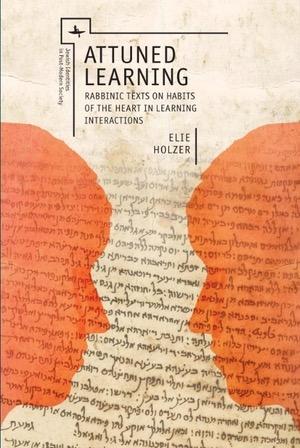
According to the publisher’s website, books in the series “Jewish Identities in Post-Modern Society” are dedicated to exploring the “multiple ways in which contemporary Jews express and define their Jewish identity.” The titles in the series “explore the sociological, historical, and psychological basis for these identities and the ways in which they reflect a rejection and or integration of the norms, morals, and values of post modern society.” Elie Holzer’s Attuned Learning is the eleventh contribution to that effort and his second contribution to the series. The purpose of the series helps to explain the approach that Holzer takes to his subject: Part One is devoted to “Conceptual Frameworks;” Part Two focuses on what “attuned learning” means for the “co-learners” devoted to the task; Part Three unpacks the implications of the theoretical framework for reading Rabbinic literature that Holzer outlines in Part One; and Part Four briefly explores the implications of his work for “Contemporary Contexts.” The nature of the series also explains why Holzer relies heavily on Hans-Georg Gadamer and Paul Ricouer, among others, for the philosophical assumptions that drive his work (20, 22-30). Arguing that “there is no such thing as an innocent reading” of any text, Holzer contends that the only antidote to self-deception is an honest effort “to clarify what lies at the basis of our interests as far as possible” (22-23). Students reading ancient texts must identify the “foremeaning or preconceptions” that shape their reading (24) and they must avoid “identifying the meaning of the text with the author’s intention. Instead, a text establishes its own form of discourse as soon as it is written, offering something to be appropriated by the reader” (26). Having laid out his philosophical assumptions, Holzer then describes the attuned learning that both teachers and students can accomplish, using the discourse in rabbinic literature as an illustration, source, and foil. “Argumentative learning” can be found there and has its contribution to make (47ff.), but – as Parker Palmer notes -- it is also “doubled edged” and can degenerate into “a secretive, zero-sum game played by individuals for private gain” (57). At the heart of rabbinic exchange, however, is what Holzer describes as chavruta, which he translates as “‘companionship’ or ‘friendship’” (41, n. 5). Attentive to the moral and emotional quality of the learning process and the roles that each co-learner plays, even conflict is placed in very different context. Teachers and students advance in their understanding by listening to one another, for which “the divine presence” or the “Shechina” (71ff.) is a metaphor and “‘God’ is understood primarily as some transcendent quality of a genuine interpersonal experience” (73). Teachers who recognize the importance of chavruta and the perils of argumentative learning are alert to the experiences of the learner and avoid the dynamics that lead students to experience their teachers as “uncaring” (112f.), “disgruntled” (114f.), or “incompetent” (116f.). Instead, Holzer argues, they are to attend to the “visage” of their students. They “see” their faces (129-130) and they look for “illumination” (130ff.). Likewise, the students “welcome” the faces of their teachers (135ff.) and receive the “visage” of their instructors (138ff.), indicating their willingness to enter into the partnered learning that has been offered. The result is a process in which “educators… never allow their active and curious presence to transform the learners’ presence into a shadow of their learners,” but “stimulate learners to live a critically conscious presence in the pedagogical and historical process” (159). There is a good deal to be absorbed here for the theological educator, especially as an antidote to teaching that is either sterile and concerned with subject matter alone or views the student as an object of deconstruction. As Holzer describes it, both approaches are equally immoral (149-150 and ns. 12 and 13). Theological educators will also find reasons to differ with the author. Writing for a broader and not necessarily religious audience, Holzer defines God and God’s presence in ways that are scarcely adequate if one conceives of God as more than a metaphor. Given the richness of the rabbinic tradition, one also wonders whether we might have learned even more, if Holzer had allowed the rabbis to reflect on what they believed about God as both a teacher and a student of Torah (88ff.). But, given his philosophical assumptions, that gift is strained through sieve of post-modern philosophy, skeptical as he is of innocent readings, let alone the voice of God. One wonders whether deeper attunement might have entertained the possibility that there was another Visage, longing to be welcomed into the conversation.
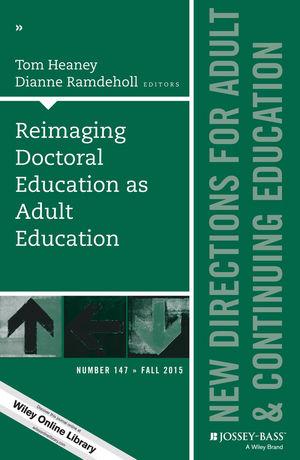
Click Here for Book Review This volume looks at graduate education, specifically the doctorate, through the lens of adult education practice. Students in doctoral programs are, after all, adults. Building on principles of adult learning, the authors provide examples of academic excellence achieved through the incorporation of best practices in adult education, including: - practical suggestions for democratically negotiating the curriculum - best practices for nurturing responsible action for social justice, - ways of encouraging collaborative and noncompetitive learning and research, and - support in shifting paradigmatic assumptions beyond the Eurocentric frame. This is the 147th volume of the Jossey Bass series New Directions for Adult and Continuing Education. Noted for its depth of coverage, it explores issues of common interest to instructors, administrators, counselors, and policymakers in a broad range of education settings, such as colleges and universities, extension programs, businesses, libraries, and museums. (From the Publisher)
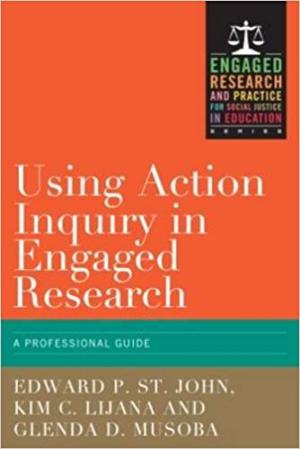
Click Here for Book Review Using Action Inquiry in Engaged Research: A Professional Guide offers higher education and school professionals practical guidance and methods for using the Action Inquiry Model (AIM) in engaged research initiatives and community partnerships. Replete with group exercises and case studies, this guide was originally developed to supplement workshops for faculty, administrators and students working on action initiatives that focused on critical educational issues facing local communities. It provides a useful framework and straightforward techniques for building empowering partnerships. The Action Inquiry Model (AIM) includes four stages: • Assessment: Using research and experience to identify critical challenges facing the university with respect to the improvement of educational opportunities • Organization: Developing workgroups to collaborate on initiatives that address critical challenges; providing financial support for new initiatives; and providing release time and professional development opportunities for faculty and staff who engage in reform initiatives • Action Initiatives: Treating reforms as pilot tests for new strategies, as a means of promoting organizational learning, professional development, and student success • Evaluation: Integrating the evaluation of current programs and incorporating new initiatives into the reform process. This guide provides two methods for learning the inquiry process: a step-by-step process for defining tasks for teams of researchers and practitioners working together to use research to inform the educational improvement; and sets of case studies on assessment and action inquiry to inform groups in collectively discussing problems and strategies, an approach that supports the classroom use of the Guide. The key tasks in action inquiry initiatives include: 1. Build an understanding of the challenge 2 Identify the causes of the challenge using data to test hypotheses 2. Look internally and externally for solutions 3. Assess possible solutions 4. Develop action plans 5. Implement pilot test, and evaluate This guide is appropriate for professional development programs and as a text for higher education Masters and Ph.D. programs. (From the Publisher)
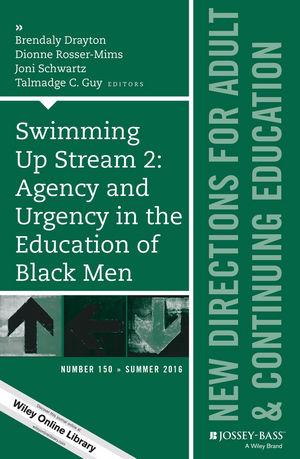
This volume is the continuation of a two-part series that focuses on salient topics and issues affecting Black males as they engage in adult education and learning. Considering the historical and current effects on the way these men participate in adult education, this volume broadens the conversations around adult Black males’ educational experiences by utilizing academic research as well as program descriptions and personal narratives with a concern for the “lived experiences.” More specifically, the authors explore: - the agency of Black men in carving out pathways to success - the programs that support these endeavors, and - the role of civil society in facilitating or inhibiting their progress. Topics covered include the digital divide, sports, professional career development, sexuality, role of religion, college as a choice, and the Black Lives Matter initiative. Practitioners will be encouraged to reflect on their own practices as they work toward engagement of Black males in learning communities. This is the 150th volume of the Jossey Bass series New Directions for Adult and Continuing Education. Noted for its depth of coverage, it explores issues of common interest to instructors, administrators, counselors, and policymakers in a broad range of education settings, such as colleges and universities, extension programs, businesses, libraries, and museums. (From the Publisher)
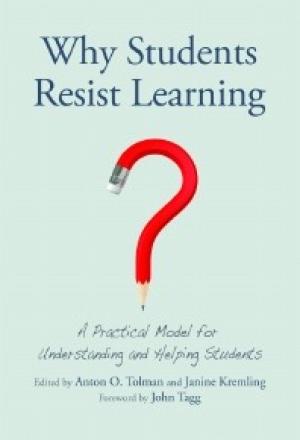
If you ask faculty members across various institutions of higher education what common topics of discussion with other faculty are, one recurring response will inevitably pertain to difficult students. These students regularly display behaviors that resist classroom teaching and learning strategies. Tolman and Kremling argue that the recurrence of this particular topic points to the critical need for institutions to understand and grapple with the complexity and interaction of factors that cause such behaviors. These behaviors, which they identify as student resistance, can be reduced when institutions develop strategies that benefit both students and instructors through defining and addressing the underlying causes. To this end, they propose an integrated model of student resistance (IMSR). IMSR utilizes Dewey’s three modes of inquiry (self-action, interaction, and transaction) as a framework and synthesizes research from diverse disciplines to comprehensively analyze the factors for student resistance. Five interactive elements are present in IMSR - namely environmental forces, institutional culture, negative classroom experiences, cognitive development, and metacognition. While these elements can be grouped into external and internal forces, Tolman and Kremling assert that they are transactional and work together as a system to either increase or reduce student resistance. Between Chapters 2 and 9, Tolman and Kremling unpack these elements – analyzing the salient characteristics, highlighting the impact of student resistance (such as personal, social, and national costs), and providing suggestions to reduce resistance. These chapters also incorporate the personal experiences of students. Tolman and Kremling’s inclusion of these experiences provides a glimpse into the daily realities experienced by students and hopefully generates compassion and understanding among faculty. In the concluding sections, they recommend specific strategies and provide a variety of instruments institutions can use to implement the IMSR. This text can serve as an invaluable tool to identify and overcome student resistance in the following ways. First, it encourages institutions to review their strategies to reduce student resistance in totality – for example, going beyond “single-field explanations” (211). Everyone matters – leadership, faculty, staff, and students – and must collaborate such that the decisions on institutional learning systems and practices meet students’ needs and address their challenges. Second, it is replete with engaging examples (drawn from research and student voices), approaches, and instruments that give institutions fresh perspectives and practical resources to move forward in strengthening motivation and reducing resistance. Furthermore, by welcoming institutions to field-test IMSR, Tolman and Kremling provide an impetus for institutions to improve their current practices in addressing student resistance. Its limitation is the absence of examples and voices drawn from institutions that may have been successful in reducing student resistance. What strategies did they employ? How do these strategies corroborate with and shed further insights into IMSR? While the voices of the students who learnt from their resistance are important, the learning of institutions that have reduced student resistance needs to be incorporated into this evolving model. Nevertheless, IMSR is of value for institutions that desire to address the myriad factors contributing to student resistance. It can serve as the focus of institutional and faculty conversations, such that these revolve around possibilities of transformation instead of endless complaints.
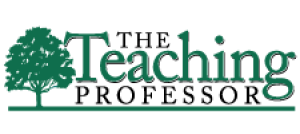
Journal Issue.
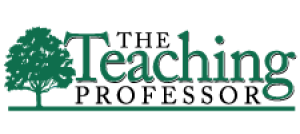
Journal Issue.

Click Here for Book Review If only we could do a better job of helping students at "connecting the dots," theological educators commonly lament. Integration, often proposed as a solution to the woes of professional education for ministry, would help students integrate knowledge, skills, spirituality, and integrity. When these remain disconnected, incompetence ensues, and the cost runs high for churches, denominations, and ministers themselves. However, we fail in thinking that integrating work is for students alone. It is a multifaceted, constructive process of learning that is contextual, reflective, and dialogical. It aims toward important ends--competent leaders who can guide Christian communities today. It entails rhythms, not stages, and dynamic movement, including disintegration. Integrating work is learning in motion, across domains, and among and between persons. It is social and communal, born of a life of learning together for faculty, staff, administrators and students. It is work that bridges the long-standing gaps between school, ministry practice, and life. It's a verb, not a noun. Here a diverse group of theological educators, through descriptive case studies, theological reflection, and theory building, offer a distinctive contribution to understanding integrating work and how best to achieve it across three domains: in community, curriculums, and courses. (From the Publisher)
Ground TransportationAbout a week prior to your travel you will receive an email from Beth Reffett (reffettb@wabash.edu) with airport shuttle information. This email includes the cell phone number of your driver, where to meet, and fellow participants with arrival times. Please print off these instructions and carry them with you.
2008 Wabash Center Workshop Series Teaching College Introductory Religion Courses From November 2007 to November 2008, the Wabash Center hosted a series of workshops at regional guild society meetings across the United States and Canada. These daylong workshops emphasized collaborative, hands-on work, and small group discussion on aligning the goals, design, and assessment of college introductory religion courses. Follow-up Department Grants Participants were eligible to apply for a non-competitive $2000 Introductory Course Department Grant to host a workshop on teaching introductory courses at their school or in their region. Teaching and Learning in College Introductory Religion Courses, by Barbara Walvoord (Blackwell, 2008). Participants received a copy of this book, which presents the findings from a 2-year empirical study of 533 introductory courses in theology and religion at 4-year colleges and universities, both public and private across the U.S. Complete List of Workshops San Diego CA – November 16, 2007 National Conference of the AAR and SBL Workshop Leaders: Eugene Gallagher, Connecticut College Priscilla Pope-Levison, Seattle Pacific University Rebecca Todd Peters, Elon University Atlanta, GA - March 7, 2008 Southeastern Commission for the Study of Religion – Regional Meeting of AAR, SBL and ASOR Workshop Leaders: Katherine Jones, Wofford College Rebecca Todd Peters, Elon University Tina Pippin, Agnes Scott College David Ratke, Lenoir-Rhyne College Michelle Tooley, Berea College Dallas, TX - March 14-15, 2008 Southwest Commission on Religious Studies-Southwest Regional Meeting of AAR, SBL, and ASOR Workshop Leaders: Katherine Jones, Wofford College Lucinda Nolan, Catholic University of America John Starkey, Oklahoma City University St. Paul, MN - March 28, 2008 Upper-Midwest Regional Meeting of AAR and SBL Workshop Leaders: Lori Hale, Augsburg College Martha Reineke, University of Northern Iowa Elna Solvang, Concordia College (MN) Kimberly Vrudny, University of St. Thomas (MN) River Forest, IL - April 4, 2008 Midwest Regional meeting of AAR Workshop Leaders: Shane Kirkpatrick, Anderson University Clodagh Weldon, Dominican University Martha Reineke, University of Northern Iowa Newberg, OR - May 2 Pacific Northwest Regional meeting of AAR, SBL, and ASOR Workshop Leaders: Priscilla Pope-Levison, Seattle Pacific University Richard Steele, Seattle Pacific University James Wellman, University of Washington Worcester, MA – May 17, 2008 College of the Holy Cross Workshop Leaders: Rosemary Carbine, Holy Cross Eugene Gallagher, Connecticut College Vancouver, BC – June 3, 2008 Congress of the Humanities and Social Sciences Workshop Leaders: Katherine Jones, Wofford College David Ratke, Lenoir-Rhyne College Chicago, IL - October 31, 2008 AAR National Meeting Workshop Leaders: Lucinda Nolan, Catholic University of America Priscilla Pope-Levison, Seattle Pacific University Boston, MA - November 21, 2008 SBL National Meeting Workshop Leaders: Eugene Gallagher, Connecticut College Elna Solvang, Concordia College (MN) Questions Please Contact: Paul Myhre Associate Director, Wabash Center myhrep@wabash.edu 1-800-655-7117
Wabash Center Staff Contact
Sarah Farmer, Ph.D
Associate Director
Wabash Center
farmers@wabash.edu